Bonse Aba
Traditional Zambian Song
-
Ships in 2 to 3 weeks
Details
Description
SKU: AN.AMP-0750
Traditional Zambian Song. Edited by Lawrence Kaptein. Arranged by Andrew Fischer. Octavo. Alliance Music Publications #AMP 0750. Published by Alliance Music Publications (AN.AMP-0750).Fischer.
Translation: All who sing have the right to be called the children of God. (fromthe orginial Bemba (Chibemba) language which ia spoken primarily in Zambia.Providing a word-for-word English translation of any Bembe text is challenging,since many Bembe words have multiple meanings and can vary depending uponthe context in which they are used. The English translation provided here(similar to John 1:12) is intended to convey the broad sentiment of the piece.
Bonse Aba is a Christian song of celebration that is popular throughout Zambia. Though often sung without accompaniment, Bonse Aba may be performed with drums or other percussion instruments. Using a combination of several low- and high-sounding drums (playing contrasting rhythms) with several types of hand-held African percussion instruments can be very effective. For both aural and visual authenticity, African percussion should be utilized rather than Latin American instruments such as maracas, tambourines, etc. The use of movement within the choir is also stylistically appropriate and adds tremendously to the overall impact of the piece. Uniform swaying from side-to-side on one verse, with the addition of hand claps (usually on primary beats: one and three) is but one of many movement possibilities. Encouraging the singers to suggest and experiment with movement can also enrich the learning experience for the chorus. Keep in mind, the piece has a sacred text, so regardless of the energetic character of the music, movement should remain dignified.
This short piece may be repeated as many times as desired. It could be effectively used as a choral processional or as a free-standing piece on a choral program. The soloist(s) could be male or female or a combination of voices. Bonse Aba could be performed using all women, all men, all children, or any combination that is practical. This flexibility is also part of the idiom and singers should be encouraged to try the piece in a variety of voicings. Experiment with voice parts; male and female choristers should find the part that feels the most comfortable and is the most enjoyable to sing. Vocal embellishments are easily improvised (also part of the idiom) and should be tastefully executed and in the style of the song. Celebratory whoops and shouts could be added and are used to indicate an intensification of feeling and excitement as the piece progresses. A tone that has a sturdy, folk-like quality should be utilized on Bonse Aba. A more conventional choral tone appropriate for most western art music, including the use of vibrato (at least for the chorus) should be avoided.
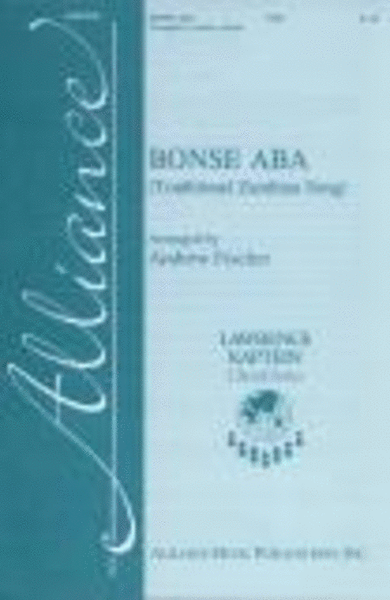
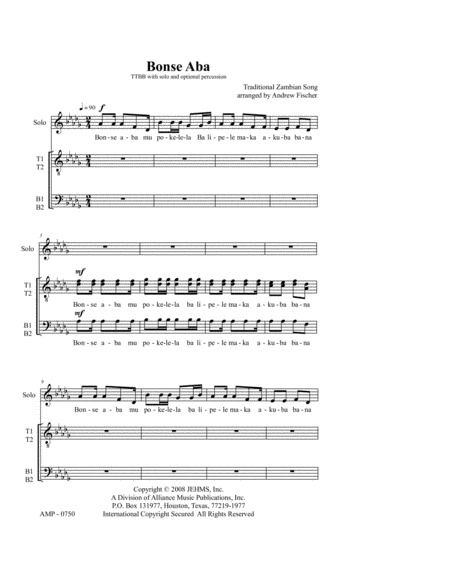
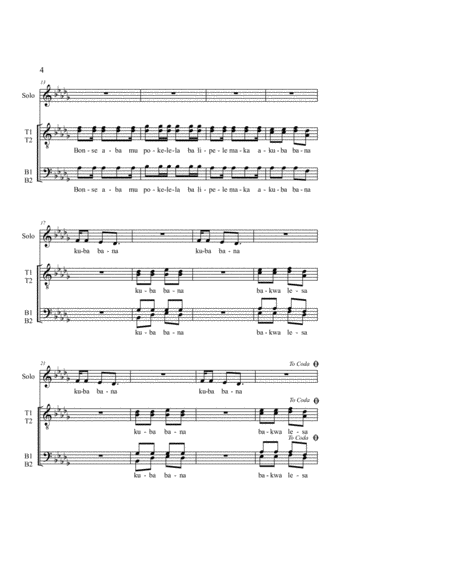
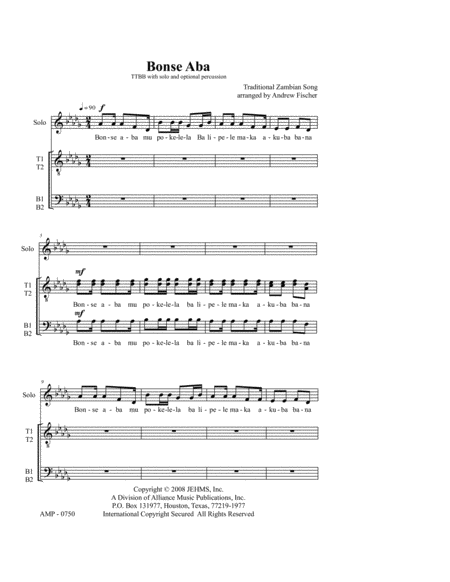
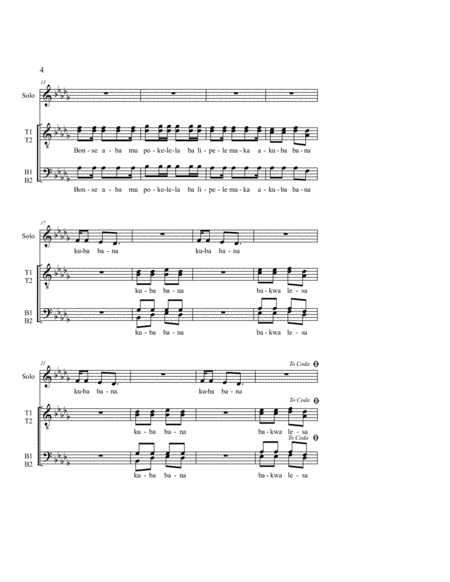
 Share
Share